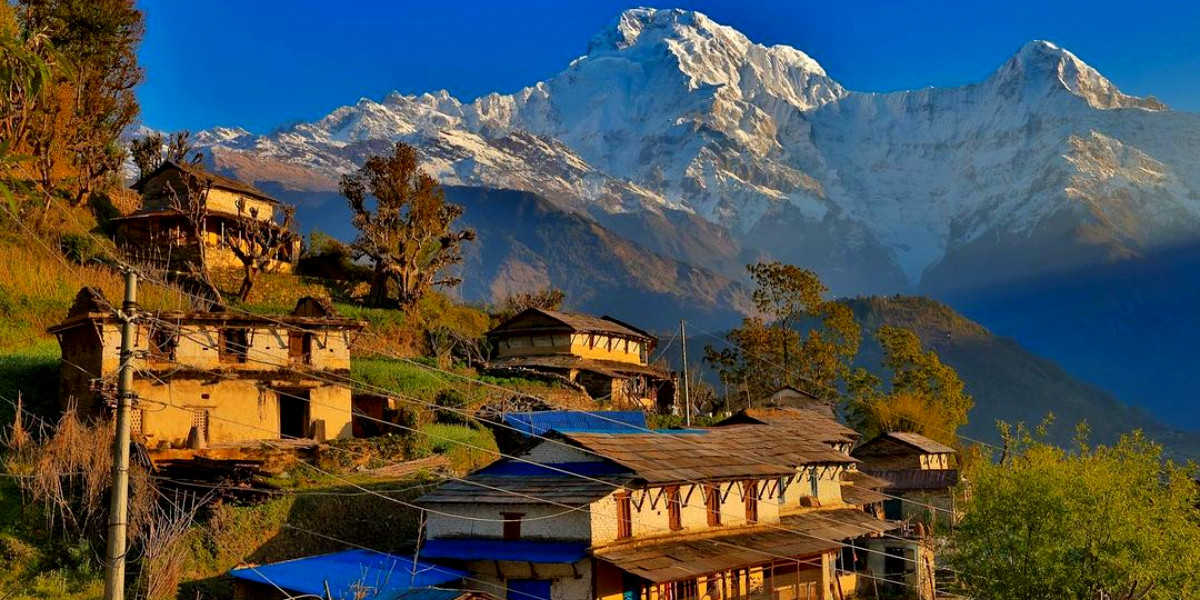Namche Bazar
Namche Bazar, often referred to as the gateway to Everest, holds a pivotal place in the hearts of trekkers and mountaineers venturing into the Himalayas. This bustling mountain town, nestled in the Khumbu region of Nepal at an elevation of approximately 3,440 metres, is not only a critical acclimatisation stop for those aiming to conquer Everest Base Camp but also a cultural hub that offers a unique glimpse into Sherpa life and tradition.
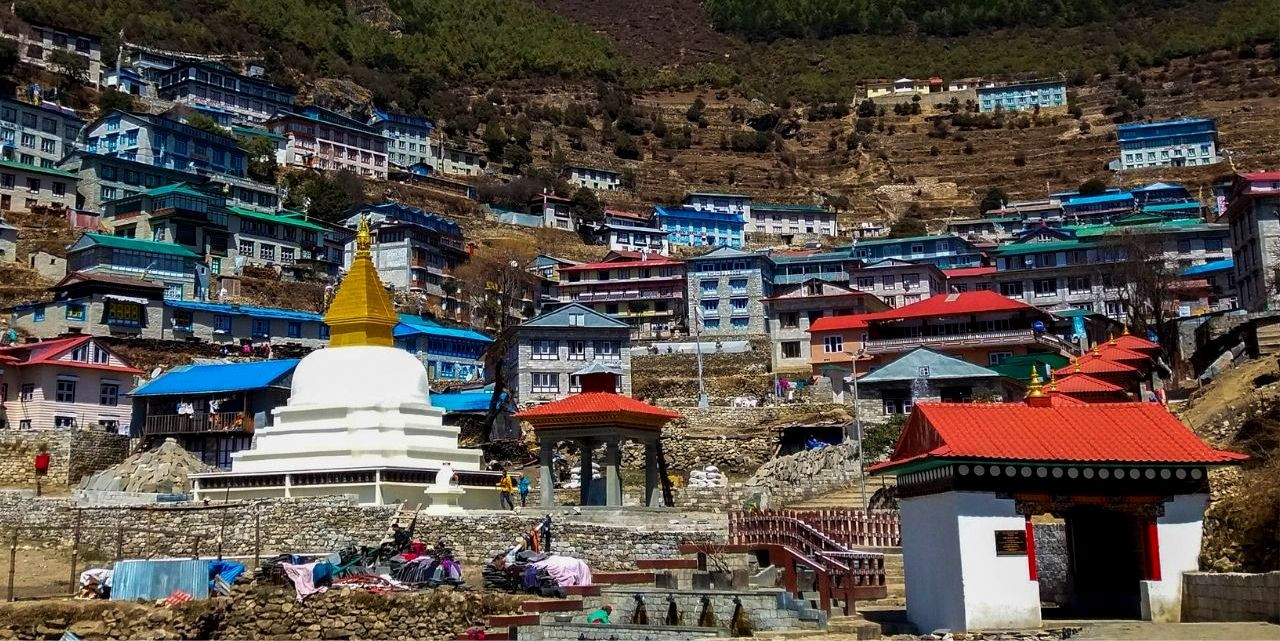
Key highlights of Namche Bazar
-
Everest Base Camp Gateway: Namche serves as the staging ground for expeditions to Everest Base Camp, providing essential amenities such as lodging, gear shops, and cafes to prepare trekkers and climbers for their journey ahead.
-
Breathtaking Views: From Namche, visitors are treated to spectacular views of the Himalayan giants, including Mount Everest, Lhotse, Nuptse, and Ama Dablam, making it a photographer's paradise.
-
Sherpa Culture and Tradition: The town is a vibrant showcase of Sherpa culture, with its colorful monasteries, museums (such as the Sherpa Culture Museum), and weekly markets where locals and visitors alike converge to trade goods and stories.
-
Acclimatization Hub: Due to its altitude, spending a few days in Namche is crucial for trekkers to acclimatize properly, preventing altitude sickness as they move higher. There are several nearby hikes, such as to the Everest View Hotel or Khumjung village, which are perfect for this purpose.
-
Hospitality and Amenities: Despite its remote location, Namche offers a surprising range of modern amenities, including internet cafes, bakeries, and even a couple of luxury lodges. The hospitality of the Sherpa people adds warmth to the cool mountain air, making every visitor's stay memorable.
-
Trekking and Exploration: Besides being a stopover, Namche is a destination in its own right, with numerous trekking trails that lead to other villages, monasteries, and viewpoints, offering deeper exploration of the Khumbu region.
-
Sagarmatha National Park: Namche is part of the Sagarmatha National Park, a UNESCO World Heritage Site, home to diverse flora and fauna, including the elusive snow leopard and the Himalayan tahr.
Namche Bazar's combination of natural beauty, cultural richness, and its role as a critical junction in the Everest region makes it an unforgettable destination. Whether you're passing through on your way to Everest Base Camp or soaking in the sights and sounds of this high-altitude marketplace, Namche promises an adventure that's as challenging as it is rewarding.
Kagbeni
Kagbeni, nestled at the confluence of the Kali Gandaki and Jhong Rivers in the Mustang district of Nepal, serves as the northern gateway to the Annapurna Circuit and the entrance to the restricted Upper Mustang region. This mediaeval village, sitting at an elevation of about 2,800 metres, is a place where the ancient and the contemporary seamlessly blend, offering visitors a glimpse into a way of life that has remained largely unchanged for centuries.
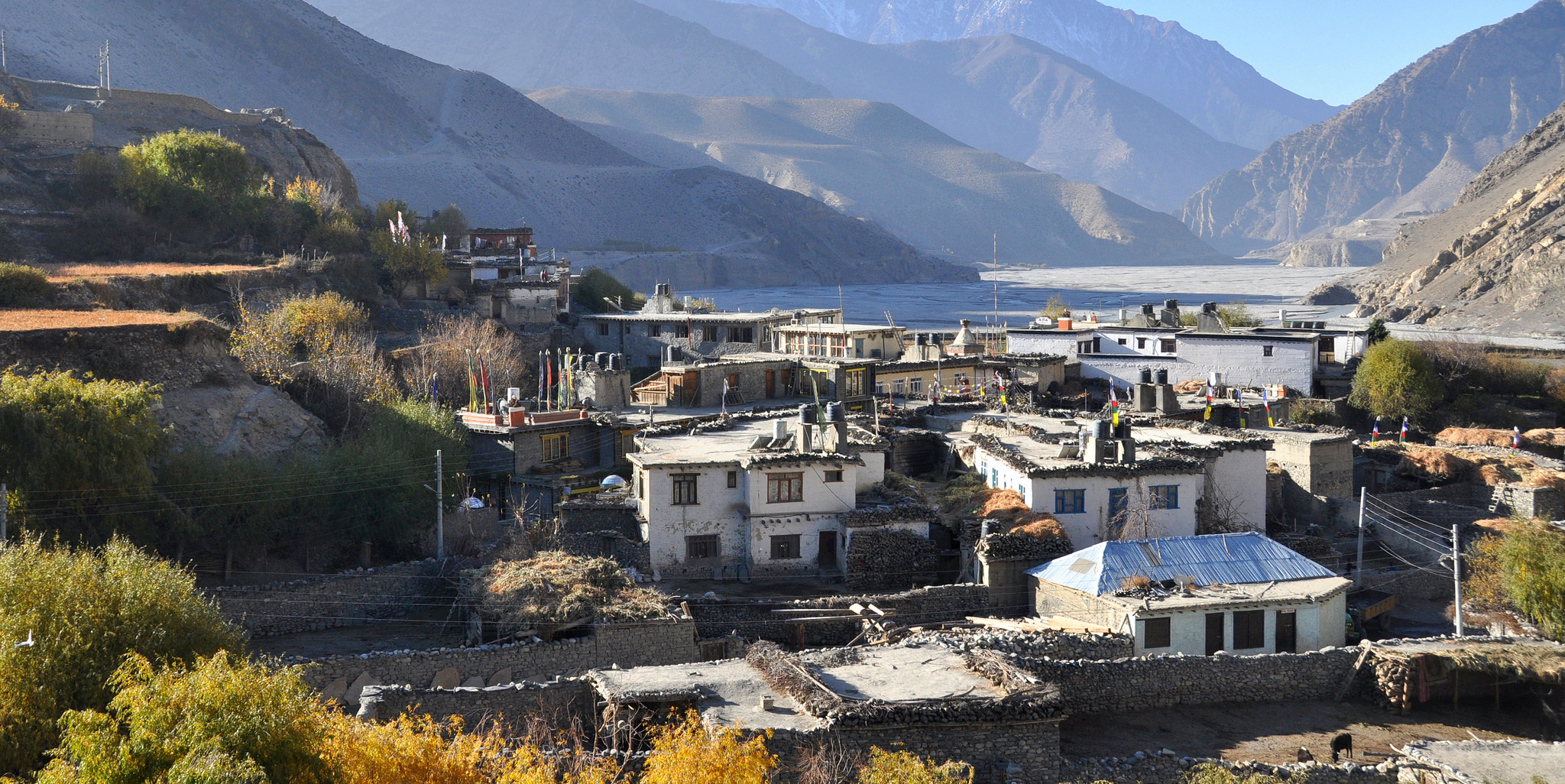
Key Highlights of Kagbeni
-
Upper Mustang Culture: Kagbeni is a threshold to the mystical Upper Mustang region, known for its stark landscapes, ancient Tibetan Buddhist culture, and centuries-old monasteries. The culture here is a testament to the village's historical significance as a trade route between Nepal and Tibet.
-
Medieval Village Charm: With its narrow alleyways, traditional mud-brick houses, and ancient monasteries, Kagbeni exudes an aura of timelessness. The Red Monastery, dating back to the 15th century, is a must-visit for its religious significance and architectural beauty.
-
Kali Gandaki River Valley: The village overlooks the Kali Gandaki Gorge, the world's deepest, offering stunning views and a chance to find fossilized ammonites, known locally as "Saligrams," which are considered holy by Hindus.
-
Trekking and Exploration: Kagbeni is not just a gateway but a destination in itself, offering numerous trekking opportunities in and around the village. It is a crucial checkpoint for trekkers heading to the arid landscapes of Upper Mustang or those exploring the Annapurna Circuit.
-
Cultural Immersion: Visitors to Kagbeni can experience authentic Tibetan-influenced lifestyle, from the local cuisine to the traditional attire of the villagers. Homestays and guesthouses in the village provide an intimate look at the daily lives of the local people.
-
Sustainable Tourism: The village is an example of sustainable tourism in action, with many local initiatives aimed at preserving the natural environment and cultural heritage. This includes community-based lodging and organic farming practices.
-
Festivals and Traditions: Kagbeni hosts several Tibetan Buddhist festivals throughout the year, such as the Tiji Festival in Lo Manthang, which visitors can witness to gain insight into the spiritual life of the region.
Kagbeni, with its unique blend of natural beauty, ancient culture, and spiritual significance, offers a tranquil yet profound experience for those seeking to explore beyond the typical tourist trails. Its location as the gateway to Upper Mustang only adds to its allure, making it a must-visit for adventurers and cultural enthusiasts alike.
Ghandruk
Ghandruk, a picturesque village in the Annapurna region of Nepal, is renowned for its breathtaking views of the Himalayan ranges, including Annapurna South, Hiunchuli, and Machapuchare (Fishtail). Situated at an elevation of approximately 2,000 meters, Ghandruk is a prime example of Nepal's rich cultural heritage and natural beauty, making it a popular destination for trekkers and cultural enthusiasts alike.

Key Highlights of Ghandruk
-
Annapurna Panoramic Views: The village offers some of the most stunning and accessible views of the Annapurna range, providing a picturesque backdrop that captivates all who visit. The sight of the sun rising over these snow-capped peaks is unforgettable.
-
Gurung Heritage Homestays: Ghandruk is home to the Gurung community, known for their bravery as Gurkha soldiers and their rich cultural traditions. Visitors can stay in traditional Gurung homestays, experiencing the local lifestyle, cuisine, and hospitality firsthand.
-
Trekking Hub: Ghandruk serves as an important stop on various trekking routes, including the Annapurna Base Camp trek and the Poon Hill trek. Its trails offer varying degrees of difficulty, appealing to both seasoned trekkers and casual hikers looking for a scenic day out.
-
Sustainable Tourism Practices: The village is a model for sustainable tourism in Nepal, with community-led initiatives focusing on conservation and eco-friendly practices. This approach ensures that visitors contribute positively to the local ecosystem and economy.
-
Cultural Immersion: Beyond the natural beauty, Ghandruk offers deep cultural immersion through its museums, such as the Gurung Museum, and traditional dance performances. These experiences provide insight into the customs, traditional attire, and daily life of the Gurung people.
-
Access to Nature and Wildlife: Situated within the Annapurna Conservation Area, Ghandruk provides opportunities for wildlife observation and bird watching, along with access to pristine forests and alpine landscapes.
-
Local Crafts and Cuisine: The village is also a great place to explore local crafts, including handwoven textiles and traditional Gurung jewelry. Sampling the local cuisine, with dishes like dhido (traditional Nepali food made from buckwheat or millet) and locally brewed spirits, is a must-do for visitors.
Ghandruk is not just a destination; it's an experience that combines the majesty of the Himalayas with the warmth and rich traditions of the Gurung community. Whether you're trekking through the Annapurna region, seeking a cultural experience, or simply looking to enjoy some of the most spectacular natural scenery in the world, Ghandruk is a village that truly has it all.
Ghale Gaun
Ghale Gaun, nestled in the lap of the Annapurna range, epitomizes the essence of rural Nepali beauty and hospitality. This village, located in the Lamjung district at an altitude of approximately 2,070 meters, is celebrated for its panoramic mountain views, rich cultural heritage, and pioneering role in community-based tourism in Nepal.
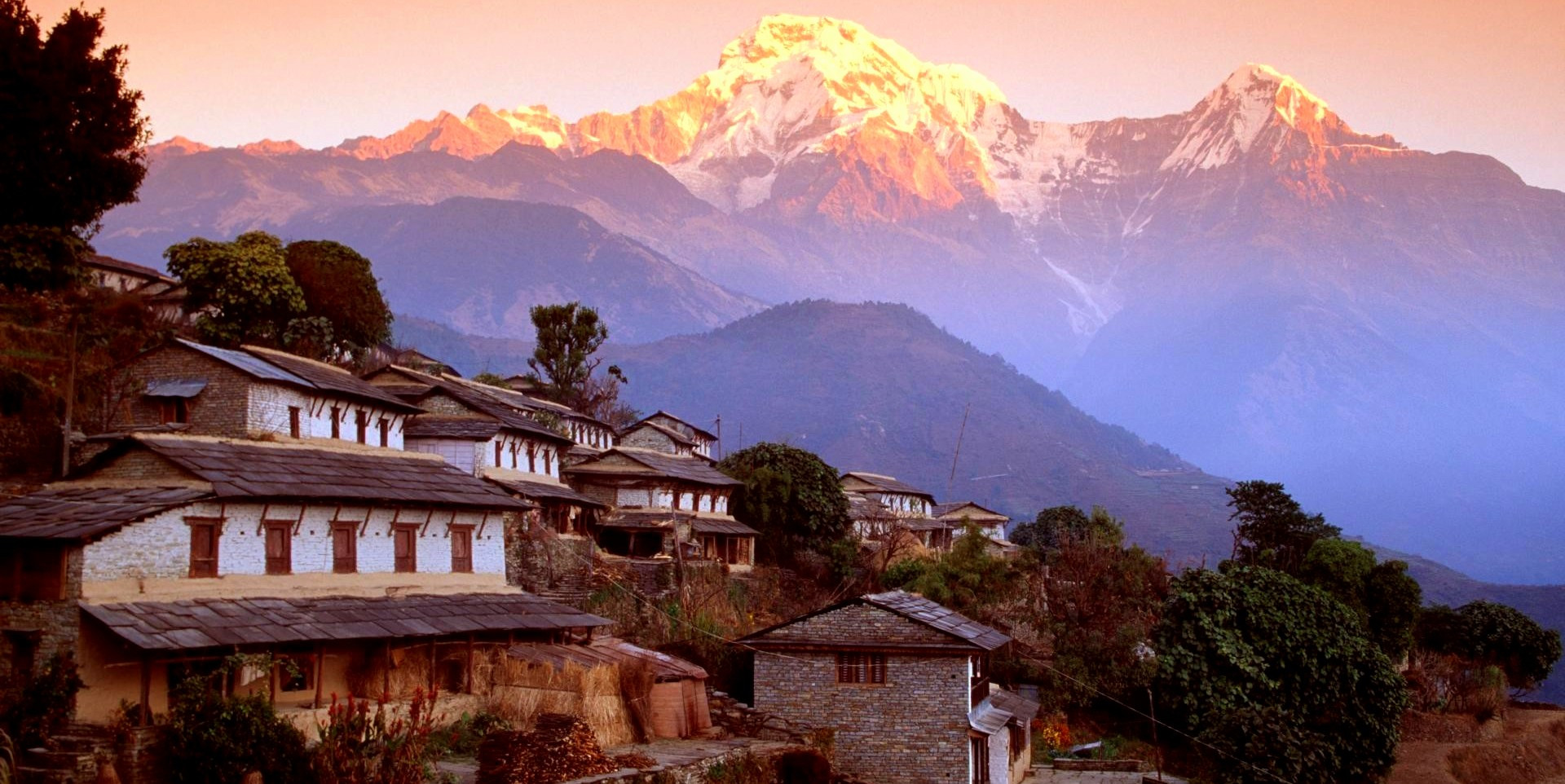
Key Highlights of Ghale Gaun
-
Breathtaking Mountain Panoramas: Ghale Gaun offers unparalleled views of some of the highest peaks in the world, including Annapurna I, Manaslu, Annapurna II, and Lamjung Himal. The village provides a serene vantage point for sunrise and sunset views over these majestic mountains.
-
Cultural Richness: The village is primarily inhabited by the Ghale and Gurung people, renowned for their warm hospitality and rich cultural traditions. Visitors have the opportunity to immerse themselves in local life, experiencing traditional dances, music, and festivals firsthand.
-
Pioneer of Homestay Tourism: Ghale Gaun is a model village for homestay tourism in Nepal, allowing visitors to stay in the homes of local families. This initiative not only provides travelers with a genuine glimpse into the daily lives of the villagers but also contributes to the local economy.
-
Eco-friendly and Sustainable Practices: Embracing sustainable tourism, the community of Ghale Gaun is involved in conservation efforts, organic farming, and the preservation of wildlife and forests. The village's approach to tourism ensures minimal environmental impact while promoting cultural preservation.
-
Trekking and Nature Walks: The village serves as a starting point for several treks and nature walks through the beautiful landscapes of the Annapurna region. These trails offer encounters with diverse flora and fauna, traditional Nepali villages, and serene natural beauty.
-
Local Cuisine and Crafts: Guests in Ghale Gaun can savor traditional Nepali meals prepared with organic, locally-sourced ingredients. The village also showcases local handicrafts, including handwoven textiles and wooden carvings, providing visitors with unique souvenirs.
-
Community Engagement: Visiting Ghale Gaun allows travelers to directly engage with community projects and initiatives, from educational programs to environmental conservation efforts. This engagement fosters a deeper connection and understanding between visitors and the local community.
Ghale Gaun stands as a beacon of community-based tourism, offering a blend of natural beauty, cultural immersion, and sustainable travel experiences. For those seeking to explore the heart and soul of Nepal's rural landscapes and traditions, Ghale Gaun is a destination that promises an enriching and unforgettable journey.
Chisapani
Chisapani, a serene and picturesque village located on the outskirts of the Kathmandu Valley, serves as a perfect retreat for those looking to escape the hustle and bustle of city life and immerse themselves in the tranquility of nature. Perched at an altitude of about 2,215 meters, it marks the beginning or end of the popular Shivapuri Nagarjun National Park trek, offering breathtaking views of the Himalayan ranges and a peaceful environment for relaxation and reflection.
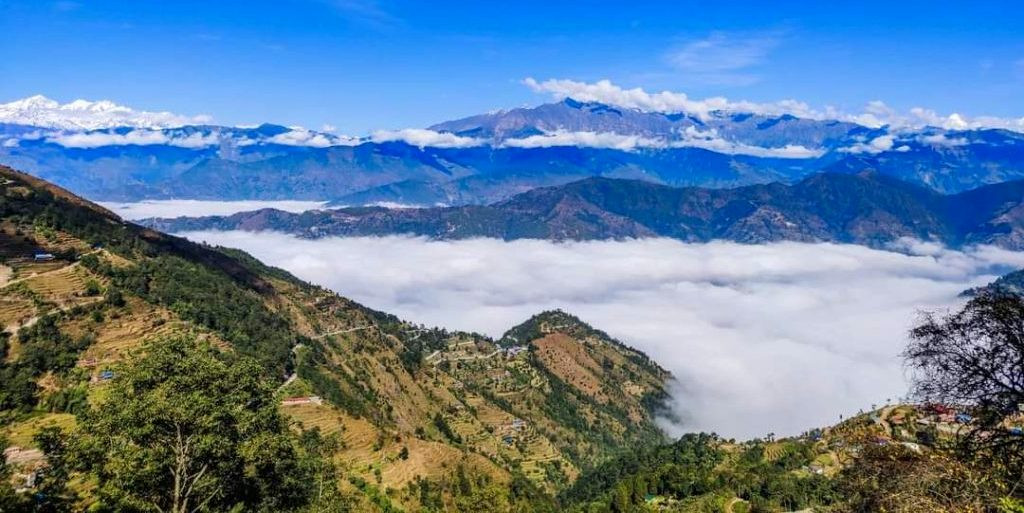
Key Highlights of Chisapani
-
Gateway to Natural Beauty: Chisapani is often the first stop for trekkers on the Shivapuri hike, leading to Nagarkot or further into the Langtang region. It provides stunning vistas of the Himalayas, including views of Langtang Lirung, Ganesh Himal, and even Mount Everest on clear days.
-
Rich Biodiversity: Located within the Shivapuri Nagarjun National Park, Chisapani is surrounded by rich biodiversity, including dense forests, wildflowers, and a variety of bird species, making it an ideal spot for bird watching and nature walks.
-
Himalayan Sunrise and Sunset: One of the village’s most mesmerizing experiences is watching the sunrise and sunset over the snow-capped peaks. The changing colors of the sky and the mountains create a magical atmosphere that is both inspiring and calming.
-
Cultural Insight: While Chisapani is quieter and less developed compared to other trekking stops, it offers a glimpse into the rural lifestyle of Nepal. Visitors can interact with the local communities and learn about their daily lives, traditions, and customs.
-
Trekking Hub: Besides its beauty and tranquility, Chisapani is a strategic starting point for several treks in the region. The trails connect to other famous trekking destinations like Nagarkot, Dhulikhel, and the Langtang Valley, catering to both novice hikers and experienced trekkers.
-
Sustainable Tourism Practices: The village and its surroundings emphasize eco-friendly practices and sustainable tourism. By choosing to stay in Chisapani, visitors support local businesses and contribute to the conservation efforts of the national park.
-
Accessible Adventure: Just a few hours' trek from Kathmandu, Chisapani is easily accessible, making it an ideal choice for those short on time but eager to experience the beauty of the Nepalese countryside and the Himalayas.
Chisapani's combination of natural beauty, cultural richness, and accessibility makes it a compelling destination for trekkers, nature lovers, and anyone looking to experience the serene side of Nepal. Whether you’re embarking on a longer trek through the Himalayas or seeking a short retreat from Kathmandu, Chisapani offers a refreshing and rejuvenating experience amidst the grandeur of nature.
Dhampus Village
Dhampus Village, nestled in the shadows of the majestic Annapurna range, is a quintessential Nepali village that epitomizes the beauty and serenity of the Himalayan countryside. Situated at an elevation of around 1,650 meters, it is easily accessible from the lake city of Pokhara, making it a popular destination for trekkers and those seeking a tranquil escape amidst nature. Dhampus offers a perfect blend of natural beauty, cultural richness, and a peaceful environment, making it a must-visit for anyone traveling to Nepal.
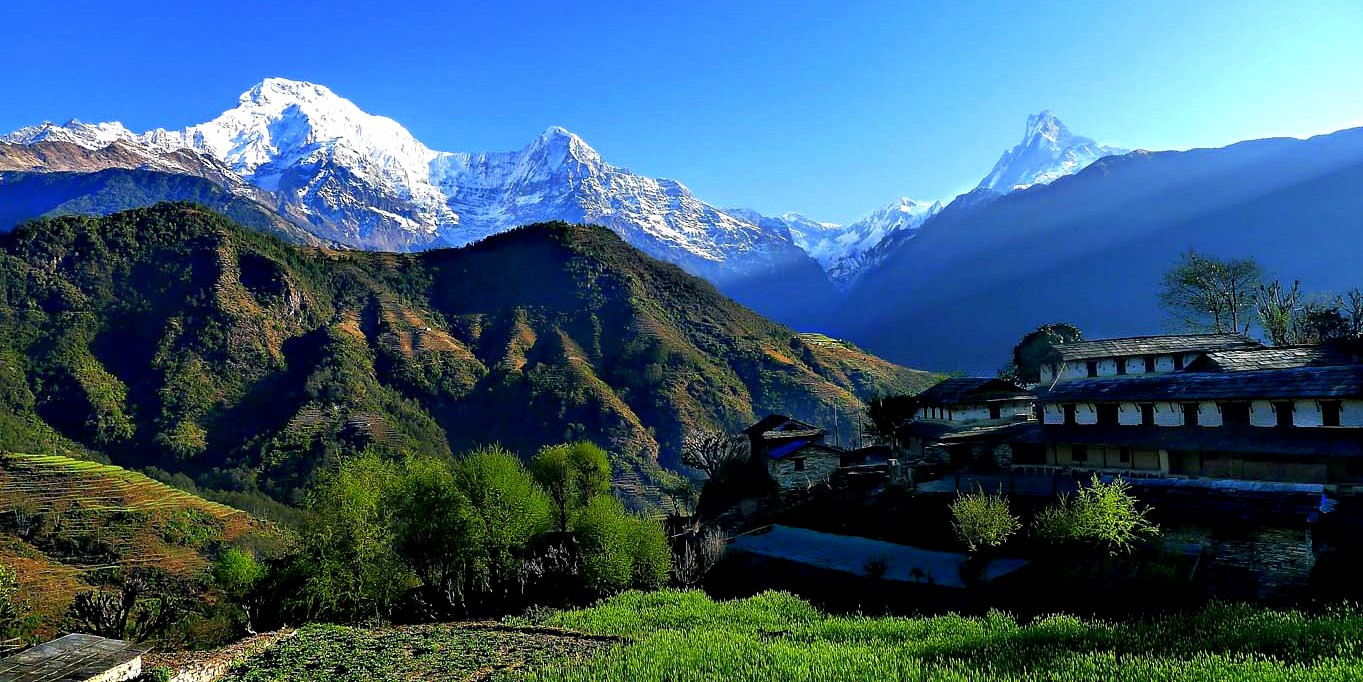
Key Highlights of Dhampus Village
-
Annapurna Panoramic Views: Dhampus Village is renowned for its stunning panoramic views of the Annapurna range, including the iconic Machapuchare (Fishtail Mountain), Annapurna South, and Hiunchuli. The village provides one of the best vantage points to witness the beauty of these Himalayan giants, especially at sunrise and sunset when the skies and mountains are bathed in golden hues.
-
Cultural Immersion: Inhabited mainly by the Gurung community, Dhampus is an excellent place for visitors to experience the rich cultural heritage of the Gurung people, known for their contributions to the Gurkha regiments. Homestays and local guesthouses offer a glimpse into the rural lifestyle of Nepal, allowing guests to immerse themselves in the daily lives and traditions of the local community.
-
Trekking Gateway: Dhampus serves as an entry point for several treks in the Annapurna region, including the Annapurna Base Camp and the Mardi Himal treks. Its trails through rhododendron forests and terraced fields provide a gentle introduction to trekking in Nepal, suitable for both beginners and experienced trekkers.
-
Peaceful Retreat: Unlike the busier trekking hubs, Dhampus offers a peaceful and serene atmosphere, perfect for meditation, yoga, or simply enjoying the quietude of nature. The village's tranquil environment, coupled with its breathtaking scenery, makes it an ideal spot for relaxation and rejuvenation.
-
Eco-friendly Practices: The community of Dhampus is committed to preserving its natural and cultural environment through sustainable and eco-friendly practices. By visiting Dhampus, travelers support these conservation efforts and contribute to the sustainability of the village's unique heritage and landscape.
-
Accessibility: Just a short drive and hike away from Pokhara, Dhampus is easily accessible, making it perfect for short visits or as a starting point for longer treks. Its proximity to Pokhara also allows for combining a visit to Dhampus with other activities in the region, such as paragliding, boating on Phewa Lake, or exploring the city's vibrant cafes and markets.
Dhampus Village not only captivates with its stunning natural beauty but also offers a profound cultural experience, reflecting the essence of Nepal's rural heartland. For travelers looking to connect with nature, engage with local cultures, and explore the majestic Annapurna range, Dhampus is an unforgettable destination that embodies the spirit of the Himalayas.
Manang
Manang is a remarkable village nestled in the heart of the Annapurna region of Nepal, known for its stunning landscapes, unique culture, and as a critical acclimatization stop for trekkers journeying on the Annapurna Circuit. This high-altitude village, situated at an elevation of approximately 3,540 meters, offers a blend of natural beauty and cultural richness that captivates every visitor.
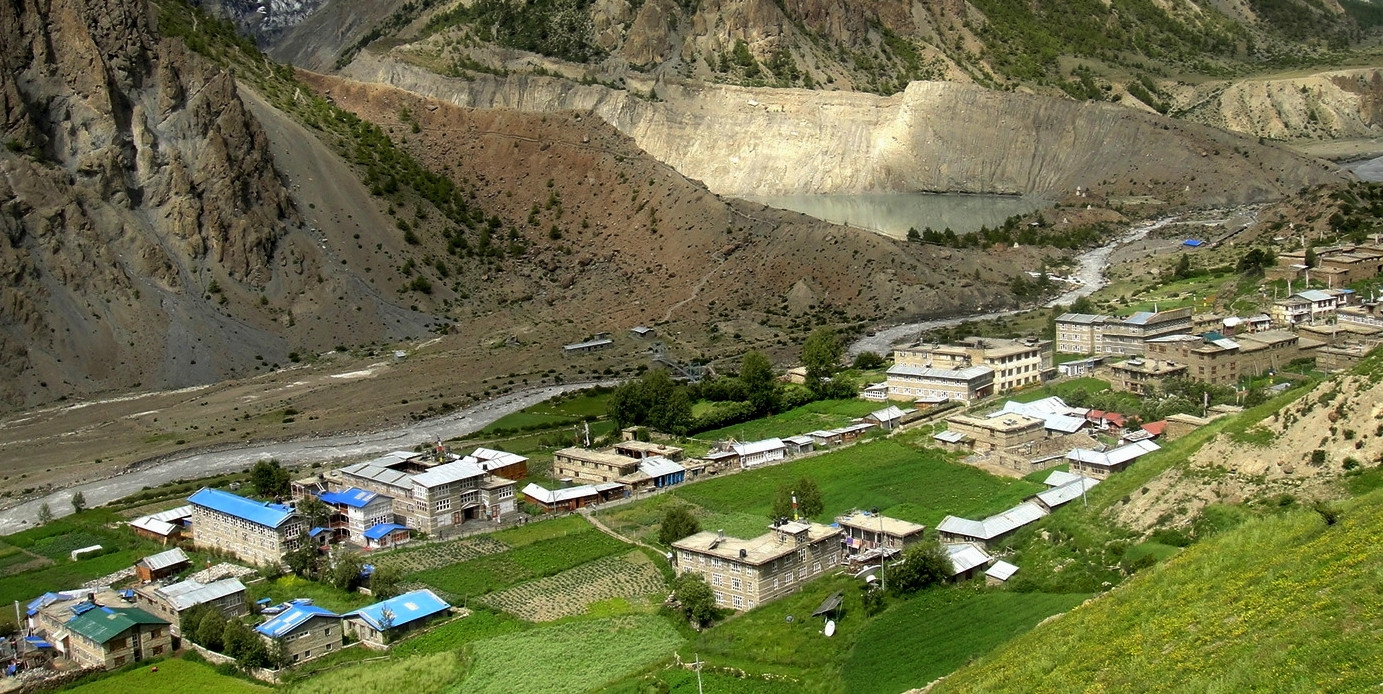
Key Highlights of Manang
-
High-altitude Lakes and Trekking Routes: Manang is famed for its access to incredible high-altitude lakes, such as Tilicho Lake, one of the highest lakes in the world. The village serves as a gateway to various trekking routes that explore the rugged beauty of the Annapurna region, offering adventurers the chance to witness the raw beauty of the Himalayas up close.
-
Rich Cultural Tapestry: Inhabited by the Nyingma and Gurung communities, Manang is a melting pot of Tibetan Buddhism and indigenous cultures. The village is dotted with ancient monasteries, chortens, and prayer flags, reflecting the deep spiritual heritage of its people.
-
Unique Landscape and Biodiversity: Surrounded by the majestic peaks of the Annapurna range, Gangapurna, and Tilicho, Manang boasts a landscape that ranges from lush pine forests to arid, moon-like terrains. This diversity also extends to its biodiversity, with the area being home to rare species such as snow leopards and blue sheep.
-
Adventurous Activities: Beyond trekking, Manang offers a plethora of adventurous activities, including mountain biking, rock climbing, and horse riding. The challenging terrain and breathtaking scenery provide the perfect backdrop for adrenaline-pumping adventures.
-
Acclimatisation Hub: For trekkers on the Annapurna Circuit, Manang serves as an essential acclimatisation stop, offering a chance to rest and adapt to the high altitude. This period is crucial for a successful trek and reduces the risk of altitude sickness as adventurers ascend further.
-
Gateway to the Mystical Upper Mustang: Manang is not just a stopover; it's also a gateway to the mystical landscapes of Upper Mustang, a region known for its stark beauty, ancient Tibetan culture, and the centuries-old kingdom of Lo.
-
Sustainable Practices and Ecotourism: The community in Manang is increasingly focusing on sustainable practices and ecotourism to preserve their natural environment and cultural heritage. Visitors are encouraged to engage with these practices, contributing to the conservation of this unique region.
Manang is more than just a destination; it's an experience that embodies the spirit of the Himalayas, offering a unique blend of adventure, culture, and natural beauty. Whether you're an avid trekker, a culture enthusiast, or simply someone in search of tranquility and breathtaking landscapes, Manang promises an unforgettable journey into the heart of the Annapurna region.
Khangsar Village
Khangsar Village, tucked away in the Annapurna region of Nepal, is a hidden gem that offers a serene and authentic experience of Himalayan life. Situated at an altitude of around 3,750 meters, it is often overshadowed by its more famous neighbors but holds its unique charm and cultural richness. This traditional Tibetan village is a gateway to some of the most pristine landscapes and cultural treasures in the Himalayas.
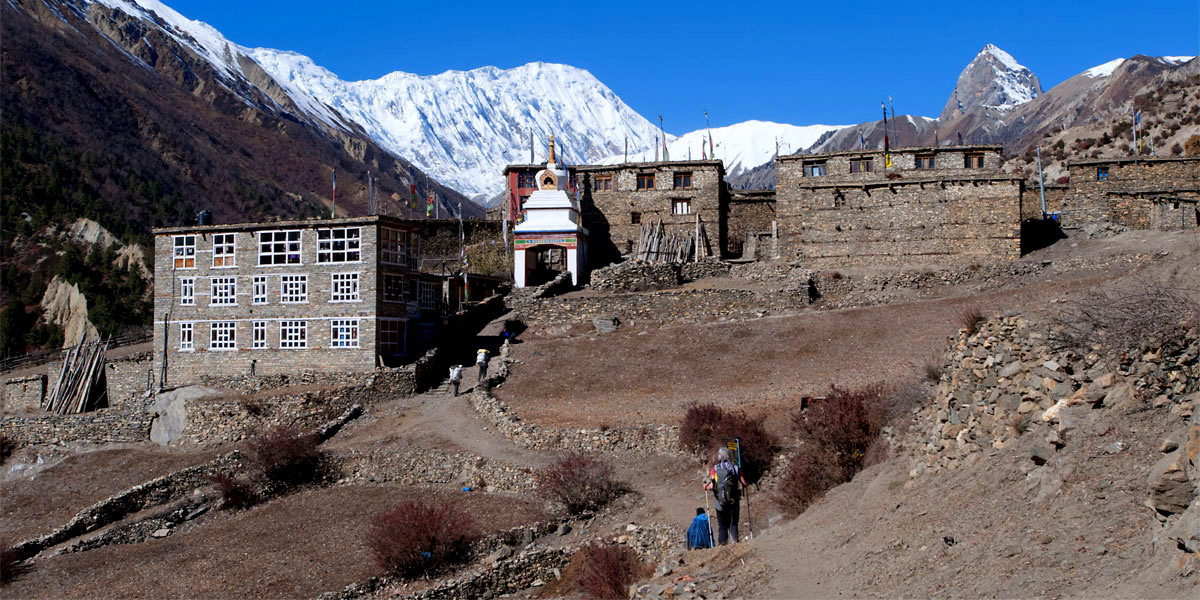
Key Highlights of Khangsar Village
-
Traditional Tibetan Architecture: Khangsar is distinguished by its traditional stone houses with flat roofs, a characteristic feature of Tibetan architecture. These structures blend seamlessly into the rugged landscape, reflecting a lifestyle adapted to the high-altitude environment.
-
Gateway to Tilicho Lake: Considered one of the highest lakes in the world, Tilicho Lake is a significant pilgrimage site for Hindus and Buddhists alike. Khangsar Village serves as the starting point for trekkers heading to this spectacular lake, offering a journey through breathtaking vistas and challenging terrain.
-
Rich Cultural Heritage: The village is a bastion of Tibetan culture, with its inhabitants maintaining their traditional way of life, customs, and practices. Visitors to Khangsar can experience this rich cultural tapestry through interactions with local families, participation in community activities, and visits to the village monastery.
-
Untouched Natural Beauty: Surrounded by the majestic peaks of the Annapurna range, Khangsar Village offers stunning views of the Himalayas. Its remote location ensures that the natural beauty of the area remains unspoiled, providing a tranquil retreat for nature lovers and adventurers.
-
Trekking Adventures: Beyond Tilicho Lake, Khangsar is an excellent base for exploring other trekking routes in the Annapurna Conservation Area. These treks range from moderate to challenging, leading to remote valleys, high mountain passes, and secluded villages.
-
Sustainable and Eco-friendly Practices: The community in Khangsar is committed to preserving their environment and cultural heritage. Efforts to promote sustainable tourism practices are evident, with a focus on minimising the impact of visitors on the natural and social environment.
-
Homestays and Local Cuisine: Staying in a homestay in Khangsar offers an immersive experience of the local lifestyle. Guests can enjoy traditional Tibetan cuisine, prepared with locally sourced ingredients, and gain insights into the daily lives of the villagers.
Khangsar Village is a testament to the enduring spirit of the Himalayan people and their harmonious existence with nature. For those seeking an off-the-beaten-path adventure that combines natural beauty, cultural immersion, and trekking challenges, Khangsar Village is an unparalleled destination. Its remote charm invites travelers to step back in time and experience the Himalayas in their most authentic form.
Chhusang Village
Chhusang Village, nestled in the rain shadow of the Himalayas in the Mustang region of Nepal, is a captivating destination that offers a unique blend of natural beauty, ancient culture, and geological wonders. Situated at an elevation of around 2,980 metres, this village is a key stop for trekkers en route to the mystical Upper Mustang or on the famous Annapurna Circuit trek. Chhusang's distinct landscape, characterised by its red sandstone cliffs and the Kali Gandaki River, tells a story of geological and cultural history stretching back centuries.
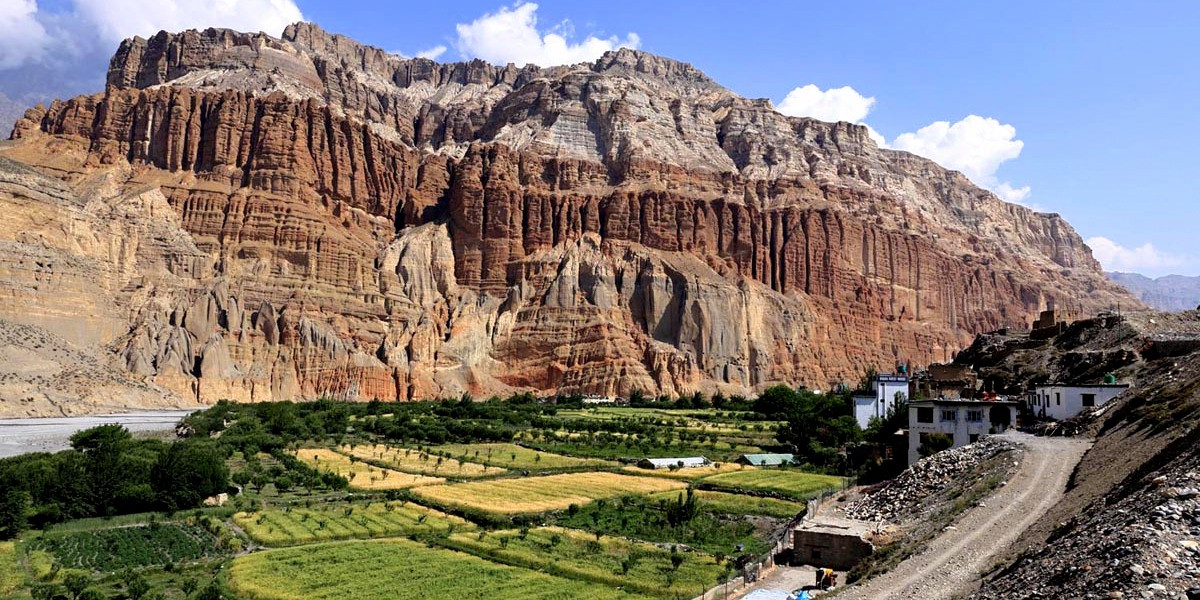
Key Highlights of Chhusang Village
-
Ancient Cave Dwellings: Chhusang is renowned for its ancient cave dwellings carved into the red sandstone cliffs. These caves, some of which date back over 2,000 years, were once used as burial chambers and later as living spaces. They offer a fascinating glimpse into early human adaptation and the historical significance of the Mustang region.
-
Gateway to Upper Mustang: The village serves as a gateway to the restricted area of Upper Mustang, known for its stark, lunar landscapes and the mediaeval kingdom of Lo Manthang. Trekkers need a special permit to enter Upper Mustang, but the journey offers an unparalleled insight into a region that has preserved its Tibetan Buddhist culture and traditions.
-
Kali Gandaki River Valley: Chhusang lies along the Kali Gandaki River, the deepest gorge in the world. The river valley is a treasure trove of fossils, specifically ammonite fossils known locally as "Saligrams," which are considered sacred by Hindus.
-
Trekking and Exploration: Beyond its historical and cultural attractions, Chhusang is an ideal starting point for various treks and explorations in the Mustang region. The rugged terrain, characterised by its unique red cliffs and barren landscapes, provides a dramatic backdrop for adventure seekers.
-
Cultural Richness: Despite its remote location, Chhusang is a vibrant community where visitors can experience the daily life of the local people, their customs, and their traditions. The village is a mosaic of Tibetan culture, with its Buddhist monasteries, prayer flags, and mani walls adding to the spiritual ambiance of the place.
-
Biodiversity and Natural Beauty: The area around Chhusang is home to a variety of flora and fauna adapted to the arid conditions. The unique ecosystem of the Mustang region offers opportunities for wildlife observation and botanical exploration.
-
Sustainable Tourism Initiatives: The community in Chhusang is actively involved in sustainable tourism practices, aiming to preserve their natural and cultural heritage while providing meaningful experiences to visitors. Homestays and local guides offer insights into the sustainable lifestyle of the Mustang region.
Chhusang Village is not just a stopover but a destination that offers a profound connection to the ancient world, the natural environment, and the enduring spirit of the Mustang region. For those drawn to the mysteries of the past and the beauty of the Himalayan wilderness, Chhusang provides an unforgettable journey into one of Nepal's most enchanting and less-traveled paths.
Bandipur
Bandipur, perched high on a ridge above the Marshyangdi River valley, presents a breathtaking panorama of the central Himalayan range, offering a stunning backdrop to this enchantingly preserved village. Known for its pristine natural beauty and rich cultural heritage, Bandipur captivates visitors with its well-preserved architecture, cobblestone streets, and traditional Newari lifestyle, making it a must-visit destination in Nepal.
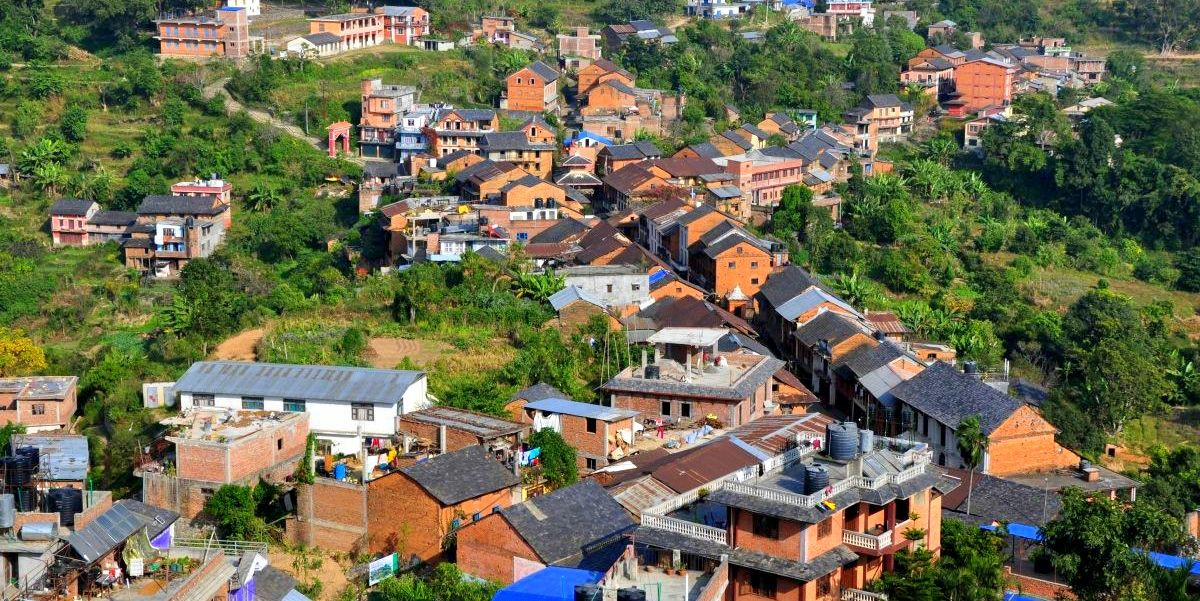
Key highlights of Bandipur
-
Preserved Newari Architecture: Bandipur is celebrated for its beautifully preserved Newari architecture, with traditional houses, temples, and buildings that date back to the 18th century. This architectural preservation provides a glimpse into Nepal's rich historical and cultural past.
-
Panoramic Himalayan Views: The village offers unparalleled views of the Himalayan range, including peaks like Dhaulagiri, Annapurna, Manaslu, and Langtang Himal. The Tundikhel field in the heart of Bandipur is the perfect spot to enjoy these majestic vistas, especially at sunrise or sunset.
-
Cultural Immersion: Bandipur is a living museum of Newari culture, where visitors can experience traditional customs, cuisine, and festivals. The vibrant cultural life of the village is evident in its lively bazaars, temples, and community spaces.
-
Adventure and Exploration: Apart from its cultural and architectural allure, Bandipur is an excellent base for outdoor activities. Trekking, caving (Siddha Gufa, the largest cave in Nepal, is nearby), and paragliding are popular, offering adventurous ways to explore the surrounding natural beauty.
-
Eco-friendly Practices: The village is a model for sustainable tourism in Nepal, with efforts to preserve its environment and heritage. Vehicle restrictions in the main bazaar area and the promotion of local crafts and produce underscore Bandipur's commitment to eco-friendly tourism.
-
Tranquil Atmosphere: Unlike the more commercialised tourist destinations, Bandipur maintains a serene and peaceful ambiance. It's an ideal retreat for those seeking a respite from the hustle and bustle of city life, offering a tranquil setting to relax and rejuvenate.
Bandipur is not just a destination; it's an experience that offers a unique blend of natural beauty, cultural richness, and a peaceful retreat from the modern world. Whether you're drawn to its historical significance, the opportunity for adventure, or simply the chance to unwind in a beautiful setting, Bandipur promises an unforgettable journey into the heart of Nepal's heritage.
Tips for Top 10 Villages in Nepal
Visiting the top 10 villages in Nepal offers a unique glimpse into the country's rich cultural heritage and stunning natural beauty. To make the most of your journey, here are some essential tips:
-
Acclimatize Properly: Especially important for high-altitude villages like Namche Bazar and Manang. Take time to acclimatize to prevent altitude sickness. This means planning extra days in your itinerary for rest and gradual elevation gain.
-
Respect Local Customs and Traditions: Nepal is home to diverse cultures and traditions. Show respect by dressing modestly, asking permission before taking photos of people, and being mindful of local customs, especially when visiting religious sites.
-
Engage in Homestays: Opt for homestays in villages like Ghandruk and Ghale Gaun to experience authentic Nepali hospitality and culture. It’s a unique opportunity to learn about the local way of life and supports the community economically.
-
Hire Local Guides: Employing local guides not only provides valuable insights into the area's history, culture, and environment but also contributes to the local economy. Guides can enhance your experience by taking you off the beaten path and explaining local customs and traditions.
-
Pack Accordingly: Weather can be unpredictable, especially in the mountains. Pack layers for varying temperatures, rain gear, and appropriate footwear. Also, remember to bring essentials like sunscreen, a hat, and a refillable water bottle.
-
Practice Eco-Friendly Tourism: Carry out what you carry in, use water sparingly (especially hot water), and minimize your plastic use. Opt for accommodations and services that follow sustainable practices.
-
Prepare for Limited Connectivity: While some villages like Namche Bazar have internet cafes and mobile coverage, many remote areas do not. Enjoy the digital detox, but inform someone of your itinerary if venturing into less connected areas.
-
Enjoy Local Cuisine: Take the opportunity to try local dishes such as dal bhat, momos, and Tibetan bread. Eating locally not only enhances your travel experience but also supports the village economy.
-
Stay Healthy: Be mindful of water safety; always drink filtered or boiled water. Carry basic first aid and any personal medication, as medical facilities in remote villages can be basic.
-
Support Local Economy: Purchase handicrafts, local products, and souvenirs directly from artisans and small shops. This direct support helps sustain traditional crafts and community livelihoods.
-
Travel with Patience and Flexibility: Infrastructure in remote villages may not be as developed as you're accustomed to. Approach your journey with patience, and be prepared for unexpected changes due to weather or local conditions.
By following these tips, you can ensure a more meaningful and responsible visit to Nepal's top villages, contributing positively to the communities you visit while enriching your travel experience.
The top 10 villages in Nepal encapsulate the essence of the country's unparalleled natural beauty, rich cultural heritage, and vibrant community life. Each village, from the bustling Namche Bazar to the tranquil Bandipur, offers a unique glimpse into the diverse landscapes and traditions of Nepal. These destinations are not only gateways to breathtaking Himalayan treks but also hubs for immersive cultural experiences, promoting sustainable tourism and supporting local economies. By exploring these villages, travellers contribute to preserving the unique cultural and natural assets of Nepal, while embarking on a journey of discovery and connection. In essence, Nepal's villages offer a profound adventure that combines the joy of exploration with the warmth of local hospitality, making each visit an unforgettable chapter in the traveler's journey.
FAQs for Top 10 Villages in Nepal
Q: What is the best time to visit the top villages in Nepal?
A: The ideal times are during the spring (March to May) and autumn (September to November) seasons. These periods offer clear skies, spectacular Himalayan views, and pleasant trekking conditions.
Q: Do I need any permits to visit these villages?
A: Yes, for areas like Upper Mustang (Kagbeni) and the Annapurna Circuit (Manang), permits such as the Annapurna Conservation Area Permit (ACAP), Trekkers' Information Management System (TIMS) card, and a special restricted area permit for Upper Mustang are required.
Q: Can I find accommodation easily in these villages?
A: Accommodations range from basic teahouses to homestays, especially in community-focused villages like Ghandruk and Ghale Gaun. Advance booking is recommended during peak seasons.
Q: Are these villages accessible by road?
A: Villages like Bandipur and Dhampus are accessible by road from cities like Pokhara. Others, such as Namche Bazar and Manang, require trekking due to their remote locations.
Q: What cultural experiences can I expect in these villages?
A: Expect diverse experiences like Gurung and Sherpa hospitality, Tibetan Buddhist ceremonies, Newari architecture, and local festivals, offering insights into Nepal's rich cultural diversity.
Q: Is it safe to travel to these villages?
A: Yes, with precautions such as hiring local guides, informing someone of your itinerary, and respecting local customs and environmental guidelines, travel is generally safe.
Q: What should I pack for a visit to these villages?
A: Essential items include layered clothing, waterproof gear, trekking shoes, a first aid kit, sun protection, a refillable water bottle, and camera equipment for capturing the landscapes.
Q: Can I use my credit cards in these villages?
A: Cash is the primary mode of transaction in remote villages, though larger ones like Namche may have cash withdrawal facilities. Carrying sufficient Nepali currency is advisable.
Q: How can I contribute to sustainable tourism in these villages?
A: Support sustainable tourism by staying in eco-friendly accommodations, buying local handicrafts, minimising waste, and engaging with community-led tourism initiatives.
Q: What kind of food will I find in these villages?
A: The local cuisine mainly includes traditional dishes like dal bhat, momos, and Tibetan bread, with many places also offering international dishes to cater to diverse tastes.
For the Nepal tour, please click here.
If you are looking for different kinds of Nepal Tours or Trekking Packages, feel free to contact us.
